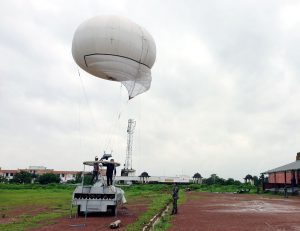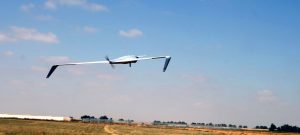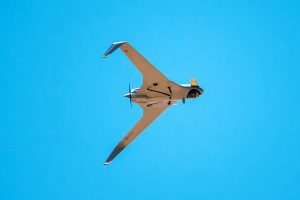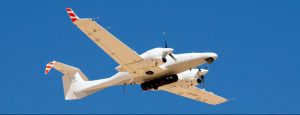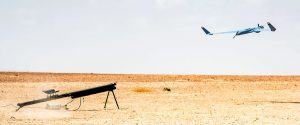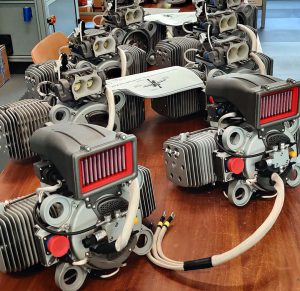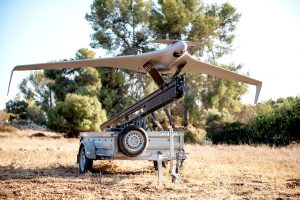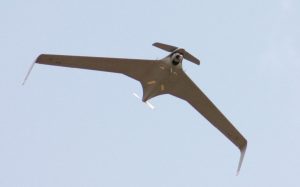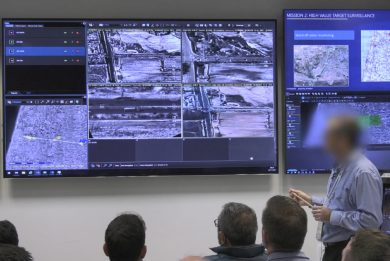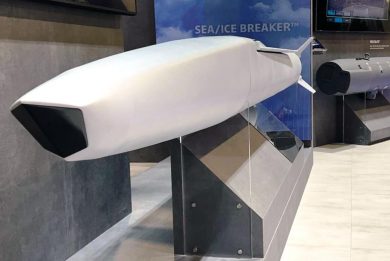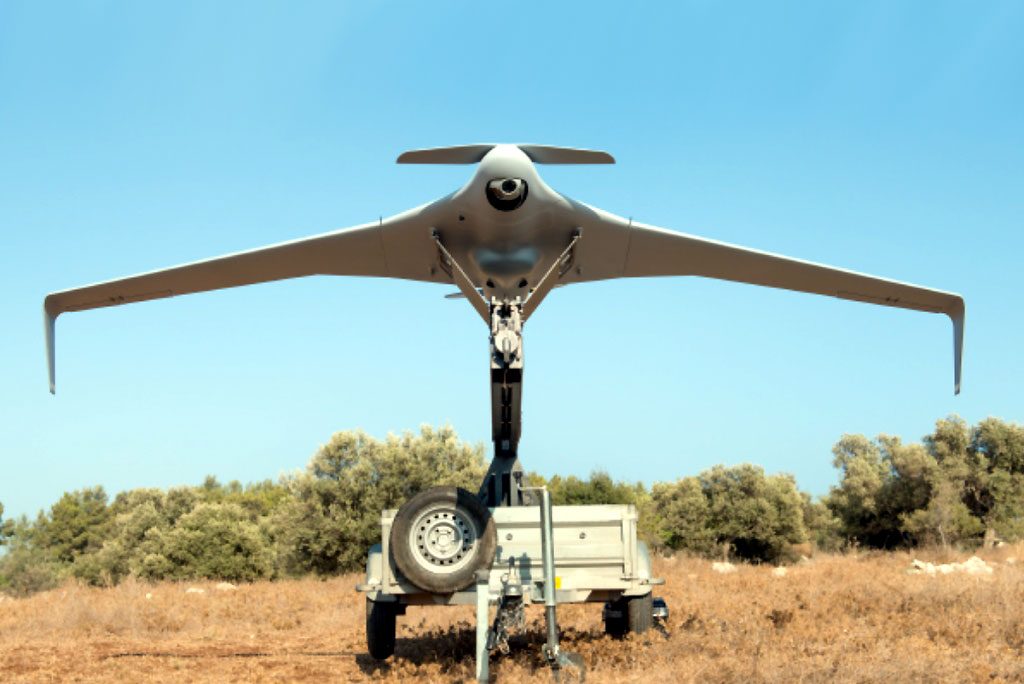
Aeronautics Group, looking to the future widening its horizons. The word to the CEO
By Paolo Valpolini
Aeronautics, the UAV developing and manufacturing company, was acquired by the Rafael Group in fall 2019 but maintained its autonomy while being now part of the much bigger organisation. Since then the pandemic led to the cancellation of most defence and aviation exhibition, which prevented direct meetings to get an update of the company way ahead after such a major changing. EDR On-Line then spoke with Aeronautics President & CEO, Moshe Elazar, an Israeli Navy officer for 27 years who then worked for over 10 years in Rafael.
As a starter, Mr. Elazar points out the current organisation of Aeronautics, which is not a single company but is itself a group of companies. “Within the group we have Aeronautics ltd. which designs, develops, manufactures and markets UAVs, then we have Commtact, which provides communications solutions for us and not only, we own 50% of Controp, specialised in electro-optic solutions in general, among which we find UAV-dedicated gimbals, we own Zanzottera in Italy, which develops and produces engines for UAVs, a small company but very important one, the engine being one of the main building blocks in a UAV, in the aerostat field we have RT LTA, and finally we have CP Technologies, CP standing for Combat Proven, which is our US based company with two divisions, one for ruggedised computer solutions and the second for aeronautical solutions in the United States. As you can see we are not limited to UAV platforms but we have all necessary subsystems in house, which allows us offering to our customer a full solution,” Mr. Elazar explains.
The company CEO underlines then the very important synergies between Aeronautics and Rafael; “Rafael is the leading technology defence company in Israel, so taking those we need in Aeronautics allowed us to make a quantum jump ahead. We in Aeronautics are a medium-size company, we are around 400 people in the mother company and slightly over 800 in the whole group, while Rafael’s engineering division only is close to 4,000 people, so it is easy to understand how much they can bring to us in terms of technology, and they fully support us, their CEO, Maj.Gen. Yoav Har-Even, having declared that one of his goals for 2020-21 is synergising the companies.” Beside technology, Rafael has a considerable commercial footprint in many continents, and positive results generated by the commercial link with the bigger company are awaited at short term. “Adding the portfolios of the two companies, thus providing the customer with more comprehensive solutions, and exploiting Rafael’s Group commercial organisation, should bring to very positive results,” Mr. Elazar told EDR On-Line.
In very recent times Aeronautics announced the acquisition of one more company, Magal Security Systems; “I want to underline that this was a signing, and we have a few months to go before closing the acquisition. In the last few months we went through a very thorough strategic process trying to identify which additional market we can access, what we can bring to the market that we do not exploit enough, and we came to the conclusion that Homeland Security (HLS) and paramilitary markets are among those. We won some contracts in the HLS world, but we came to the conclusion that Magal Systems was the company that might complement us, as it worked for 40 years in those market areas.” The Aeronautics CEO states that his company decided to concentrate on three main sectors within HLS, land border protection, maritime border protection, critical infrastructures protection, mainly oil and gas; “those are the big systems, it is where we can put our added value, we want to stay on those markets where we compete with major companies. In the future Aeronautics will lead the HLS market for both Aeronautics and Rafael groups,” Mr. Elazar announces.
The UAVs remaining Aeronautics core business, the company CEO described the current portfolio and the trends for the future. “We offer a very wide range of drones and UAVs, which goes from small VTOL to big MALE systems. We took the strategic decision to concentrate on the lower tier. Looking at the market trend and at what we perform with our tactical UAVs (TUAVs), this is where we want to be, where we bring our added value, where we bring the technologies. This doesn’t mean we do not offer other systems, but the TUAVs segment is definitely our focus,” the CEO says.
Explaining the reasons for such decision, he takes the example of the Orbiter 4, a 50 kg MTOW airframe with a 12 kg dual payload, an endurance of over 24 hours and a service ceiling of 18,000 ft, with a 150 km range in line-of-sight but with SATCOM link as an option to extend that range. “Ten years ago, looking at payloads, these were big and heavy, and to install top quality payloads you needed a MALE,” the Aeronautics CEO points out; “Now everything has become smaller and lighter thanks to miniaturisation, so looking at the Orbiter 4 fitted with SATCOM, on which we can put a radar and an IR sensor, or a SIGINT, we can do what was traditionally a MALE mission, with the advantages of a TUAV, i.e. you don’t need a runway which is a major benefit in terms of operational flexibility and logistic footprint reduction,” he adds, underlining once again the importance of Rafael technologies and products, i.e. considering the sophisticated payloads that the mother company has in its portfolio. “We truly believe that for military purposes, considering all what said previously, TUAVs, namely the Orbiter 4 and what it offers, are something that increase the dollar-for-value, considering capabilities, performances, endurance and logistics.”
Of course Mr. Elazar is well conscious that not all missions can be flown by a TUAV; “For some specific applications and for some agencies we do understand that we still need the big MALE airframes, i.e. our Dominator twin-engine MALE is very capable especially for maritime surveillance missions,” he says, speaking of the over 1.9 tonnes MTOW with more than 370 kg of payload UAV which is the company heaviest product.
On the other end of the scale Aeronautics proposes small systems, aimed mostly at land forces. “At platoon level soldiers need very small systems, that can be operated very easily, such as VTOL ones, capable to fly for limited time but giving considerable awareness advantages to the soldier,” he says. “We maintain the whole portfolio, however in the next few years we will concentrate our efforts on the small TUAVs and on TUAVs for the aforementioned reasons.”
While not detailing what Aeronautics has in the pipeline, Moshe Elazar said however that his company is following two paths, the improvement of current products and the development of new systems; “We are improving our current products in terms of avionics, sensors and system level, and we are starting to work on the new generation of TUAVs.”
Aeronautics’ portfolio includes the Orbiter 1K Loitering munition UAS , a 13 kg MTOW fixed-wing airframe that carries a 3 kg warhead, being able to carry out both the ISR and the attack mission in one sortie. “This type of small UAV can do its job in a very cost-effective manner.” No more comments were made on that point, but EDR On-Line understood that the presence of Aeronautics in this specific field might grow.
Asked about the technologies evolution that might affect the future generation of Aeronautics’ UAVs, the company CEO told EDR On-Line: “Let’s start with propulsion, which is one of the key elements. Zanzottera provided us an edge as there are not many companies producing dedicated engines for UAVs, such as the Z101 used on the Orbiter 4 that brings considerable advantages from the fuel consumption standpoint compared to other. We are all the time improving the propulsion, and this is a step-by-step development. Coming to electric propulsion, and looking at batteries, every day there are improvements in batteries and we are working closely with some of those companies. We are trying to find the right way to have a much greater power-density, we are looking in ever-possible direction, considering we are very limited in volume and weight. We are looking at various solutions, including hybrid, and I think that the capability to considerably increase small UAVs endurance is there, and it will be increased year by year.”
While obviously Mr. Elazar cannot get into details, he points out that Aeronautics together with Rafael will put on UAVs very advanced payloads. “However we are not limiting ourselves to Rafael’s payloads, and we are looking at the products of other companies as well. One of the most important things is however how to extract data, how to extract information from those payloads, and the way to use very advanced AI algorithms that will take all data from all the sensors and combine and fuse them in order to provide actuable information to the user,” Moshe Elazar says. This should also help in limiting the amount of data to be downloaded to the ground control station via data link; “Either in line of sight or via SATCOM, the data link remains a channel with limited capability in terms of throughput, another problem being the risk of interception or disruption of communications by enemy assets, so we are trying to do most of the work on board the UAV downloading to the ground only essential information,” he confirms. This brings to cybersecurity: “We already have cyber protection in our company and in our products, but it is time to go to the next level, and here Rafael is the optimal partner, having obtained the contract for Israel’s National Cyber Centre three years ago. So we are trying to get the right cyber-protection from Rafael, in order to insert in our systems the right level of protection, on UAVs, on communications, as well as on ground control stations, as it is a combined issue.”
When previously mentioning the Dominator, Mr. Elazar said that it might have interesting civilian uses. Diversifying the customer base is always a wise move, so how much is Aeronautics looking into the civilian market? “The HLS we mentioned previously often falls into the civilian domain, and some of Magal’s projects are in fact civilian, protecting oil and gas facilities or, as it was announced recently, the Mombasa seaport, so the border is vague. However we are looking at other civilian applications of our products. The UAV civilian market is huge but pretty dangerous, as it is often difficult to identify the right customer within an endless number of entities, and for a company of our size it is dangerous to follow such a widespread market. We therefore decided that we are going to do so through our US daughter company, CP Aeronautics. We acquired CP Technology three years ago as it brought to us ruggedised computers and displays, which are relevant to UAV systems. It had a steady growth, and now it is moving from California to Prescott, Arizona, with a big support from local authorities, the new facility to be inaugurated next May. Through it, we are looking mostly at the agricultural domain as a start, and then we will expand our activities.”
After a whole life in big organisations, Moshe Elazar became the CEO of a medium-sized organisation; “I found a very dynamic company that can do more with less, with a relatively small engineering department we are reaching achievements that bigger companies cannot even dream about. This was achieved only thanks to the DNA of Aeronautics, the young people who want to succeed, who are thriving for success, and this is very exciting even for people like me who spent their life in much bigger organisations,” Moshe Elazar concludes.
Photos courtesy Aeronautics

